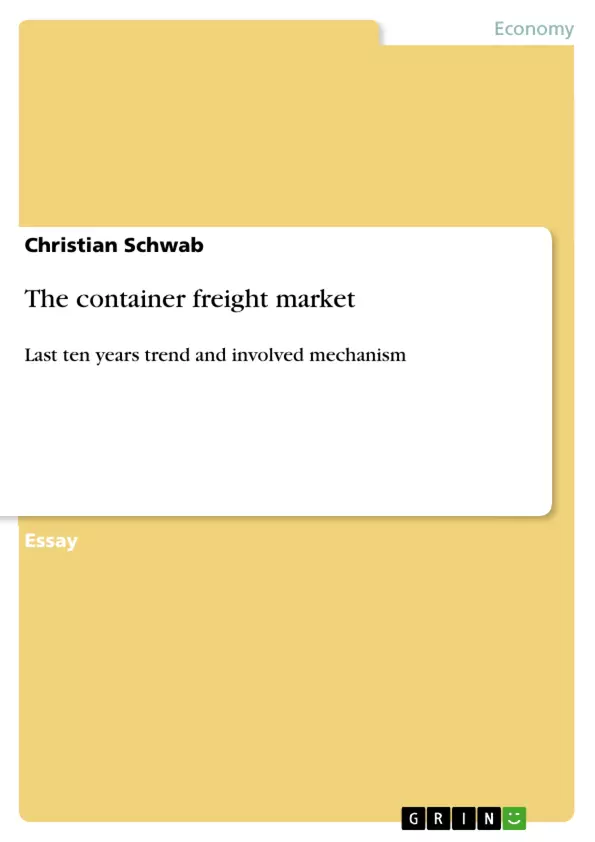Ship owners trade in four different markets: The new building market, the freight market, the
sales- and purchasing market and the demolition market. This paper
summarises the container freight market.
At first the paper will define the market and involved parties. Secondly key concepts as well as involved mechanism of the freight market will be introduced. After that, the last ten years
trend will be presented and mentioned mechanism and concepts will be applied accordingly.
Finally the summary will end with a conclusion.
Inhaltsverzeichnis (Table of Contents)
- Introduction
- Definition and parties involved
- Key concepts
- Mechanism of freight-rates
- Trade elasticity of demand
- Key influences on supply and demand
- Container market freight-rate index
- Conclusion
Zielsetzung und Themenschwerpunkte (Objectives and Key Themes)
This paper provides an overview of the container freight market, focusing on the last ten years' trends and the mechanisms that drive these trends. It aims to define the market, the involved parties, and key concepts related to freight rates and trade elasticity. The paper also analyzes the key influences on supply and demand in the container freight market and examines the container market freight-rate index.
- The mechanisms of freight-rate determination
- The concept of trade elasticity of demand for sea-transport
- Key influences on supply and demand in the container freight market
- The relationship between supply and demand and freight-rates
- Analysis of the container market freight-rate index
Zusammenfassung der Kapitel (Chapter Summaries)
The paper begins by defining the container freight market and identifying the key players involved. It explains how the market operates, including the mechanism of freight-rates, which is driven by the interaction of supply and demand. The paper explores the concept of trade elasticity of demand for sea-transport, highlighting the difference in elasticity between bulk commodities and containerized cargo.
The paper further investigates the key influences on supply and demand, examining variables such as the world economy, seaborn commodity trades, average haul, random shocks, transport costs, world fleet, fleet productivity, shipbuilding production, scrapping and losses, and freight revenue. Finally, it analyzes the container market freight-rate index, tracing its fluctuations over the last decade and linking these fluctuations to key events and influencing factors.
Schlüsselwörter (Keywords)
The key concepts and focus areas of this paper include container freight market, freight-rates, trade elasticity of demand, supply and demand, container market freight-rate index, world economy, seaborn commodity trades, and fleet productivity.
- Citar trabajo
- Christian Schwab (Autor), 2011, The container freight market, Múnich, GRIN Verlag, https://www.grin.com/document/198723



